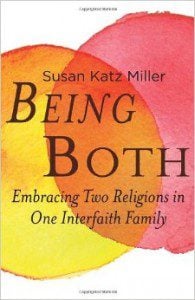 |
|
They’re only human
|
The Western imagination is both intrigued and appalled by the lives of women shrouded in the anonymity of the abaya. Stories of oppression and misery describing life underneath the all-encompassing blackness have increasingly made their way into print and the bookstores in the West. The latest in this growing list is Raja Alsanea’s new novel, “The Girls of Riyadh”.
Written originally in Arabic, titled “Banat al Riyadh”, Alsanea’s book follows the lives of four close school friends as they marry, get divorced and become mothers. Details of romances conducted on cell phones, trysts with boyfriends arranged by complicit neighbours and surreptitious drinking of champagne at wedding parties so outraged Saudi officials that the book was officially banned in Saudi Arabia.
The story revolves around four friends — Sadeem, Gamrah, Michelle and Lamees — all daughters born into privileged, but not royal, Saudi families. The risqué prose, sometimes salacious content and generally frank discussion of taboo topics such as sexuality and male-female relationships has invited comparisons to the American show “Sex and the City”, which similarly followed the lives of four Manhattan women in their search for love and fulfilment. While such comparisons may increase the popularity of the book, they draw attention away from its ability to speak honestly to a wide audience of Saudis, Muslims and Westerners and bring out facets of Saudi life that remain unexplored and unrepresented in literature.
Alsanea widely resists the temptation to make each girl’s story a paradigmatic feminist statement. The result is engaging accounts of how a variety of factors collude to make falling in love in Saudi Arabia a difficult proposition for women. One of the friends — Michelle, a half Saudi and half American girl — falls in love with the man of her dreams, whom she meets in a shopping mall during a secret outing with her friends. All is well in their romance facilitated by secret meetings, constant text messaging and phone calls late into the night until the ominous moment when the gutless Faisal has to broach the subject of marriage to his mother. As Alsanea laments: “Saudi society – a fruit cocktail of social classes where no class ever mixes with another.”
Michelle’s family, while affluent is not “tribal” and hence an unsuitable match. This fact is recounted by Faisal’s mother and illustrates how romances run aground. Revenge is ultimately Michelle’s, however, when at the end of the novel, she finds herself attending Faisal’s wedding only to see that he has had to marry an obese, unattractive bride. In fiction at least, jilted lovers can have their day. In a theme familiar to Pakistani readers, Alsanea uses the wedding as a recurrent theme to symbolise the message that behind nearly every wedding celebration is a trail of unfinished lost loves that never got a chance.
Similarly poignant is Alsanea’s portrayal of how restrictions in Riyadh on male-female interaction persist even when Saudi girls supposedly “escape” to places like London. When one of the girls, Sadeem, is unceremoniously divorced by her betrothed who decides that her overt shows of affection (even though they occur after the nikah) are unbecoming, she leaves for London to escape her grief. While away, she meets Firas, whom she learns (much to her chagrin) is Saudi. The absence of the abaya, Alsanea shows us, imposes an even more stringent presumption in which Sadeem, in every interaction, must prove that she is not loose and immoral simply because she has agreed to meet a male by herself. Abaya or not, the strict code of restrictions that defines life in Saudi Arabia manages to transcend geography.
Most tragic of the stories is that of Gamrah, the shyest of the four whose wedding opens the novel. Days after her arranged marriage the couple leave for the United States so that her husband may resume graduate studies at the University of Chicago. Here, a brutal marital reality awaits her, after a seeming eternity of lonely nights and days while her husband “studies”, Gamrah finally reads the writing on the wall and discovers that her husband has a long-time girlfriend that he was not allowed to marry.
Schooled by her mother in the dubious logic that she must become a mother before she confronts him, she skips birth control pills, gets pregnant and then arranges to meet the “other” woman. In a heartrending portrayal of humiliation and regret, Rasheed chooses his girlfriend and the now pregnant Gamrah is sent home with divorce papers soon following.
Unlike Michelle’s story, there is no recrimination here: Gamrah remains relegated to the backrooms of her parental home, her only respite being online chats with men under assumed names. As Alsanea clearly depicts, for a young divorced mother in Saudi Arabia, a lifetime of loneliness awaits. No amount of internet chatting and text messaging can rescue Gamrah from her ill-deserved fate.
In recent years, much paper has been devoted to the issue of whether Western feminism is truly applicable to women living in Muslim countries. Alsanea’s book depicts how, despite being shrouded under abayas, Saudi women have developed their own modes of resistance and self-determination. These workarounds may not afford them empowerment but are, nevertheless, a step forward.
The arrival of the internet and cell phones has recast life under the abaya into a curious intersection of technology and archaic tradition. At the end of the novel, Sadeem finds herself acquiescing to being a second wife to the man she loves; Lamees is lucky enough to marry the man of her choice; Michelle moves to Dubai and Gamrah remains lonely and hopeless in Riyadh.
The girls’ lives are odd contradictions between feminist impulses, tribal traditions and technological advances, but together they make a strong statement: under the black abayas that define Saudi women is a seething and urgent desire for change.
Rafia Zakaria is associate editor of altmuslim.com and an attorney and member of the Asian American Network Against Abuse of Women. She teaches courses on constitutional law and political philosophy. This article previously appeared in Daily Times (Pakistan).











